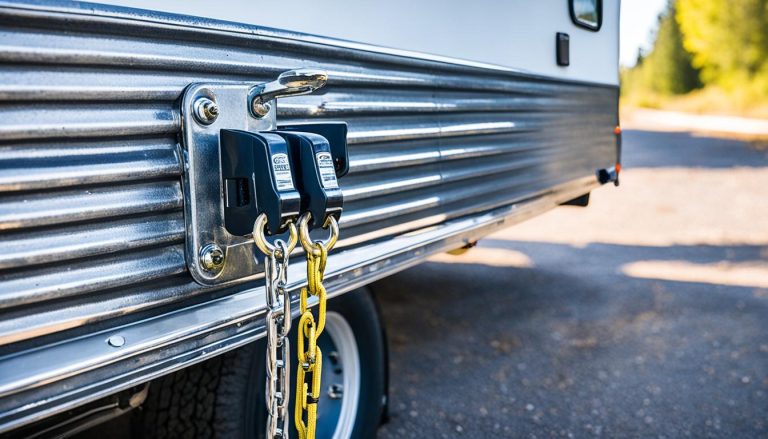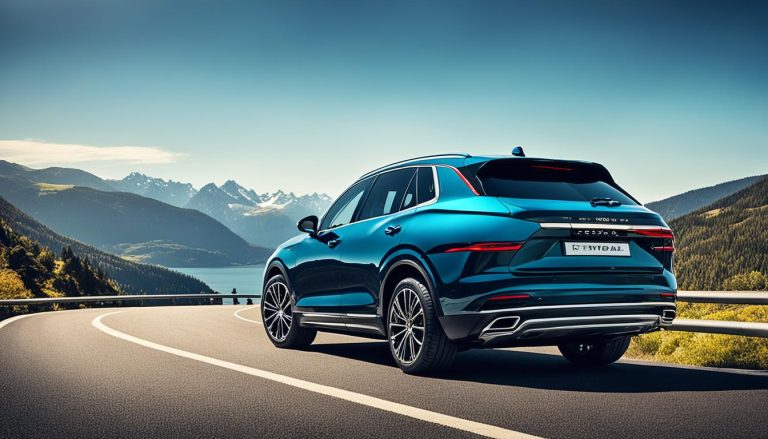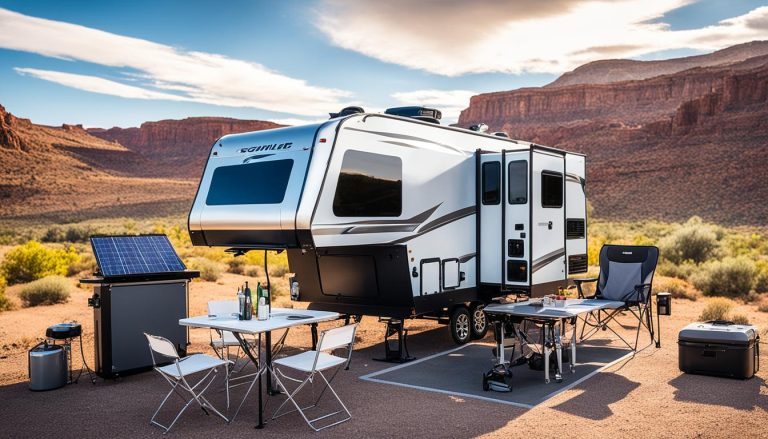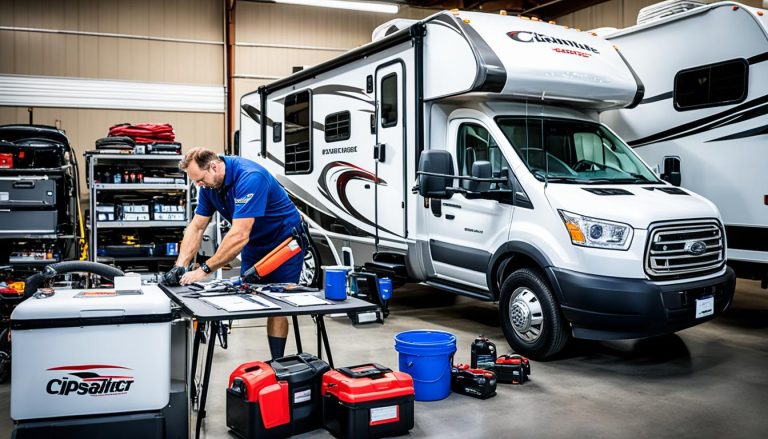Essential Guide to Towbar Wiring Installation
gorvlifestyle.com and its partners may earn a commission if you purchase a product through one of our links
Embarking on a towbar wiring installation project can initially seem daunting, but with the right knowledge and resources, it can ensure the safety and reliability of your vehicle when towing. Whether you’re connecting a trailer or a caravan, understanding the intricacies of towbar electrical components is critical. By opting for professional towbar wiring services, one can rest assured that their vehicle is equipped with reliable towbar wiring solutions suited to their specific needs.
It’s not simply about making connections; it’s about securing a seamless integration of your vehicle’s electrical systems with your towing setup. A well-installed wiring harness not only guarantees that your taillights and signals work in tandem with your vehicle but also upholds the highest standards of road safety. In the hands of seasoned professionals, the installation process is streamlined, yielding a sturdy and enduring solution for all your towing necessities.
Key Takeaways
- Choosing a custom wiring harness or T-connectors ensures a vehicle-specific fit for your towbar wiring needs.
- Quality towbar installation services offer splice-in wiring with taillight converters for complex vehicle systems.
- Maintain road safety and functionality with replacement plugs and sockets for any worn-out towbar electrical components.
- Professional installers provide a hassle-free connection without the need for splicing, soldering, or cutting.
- Secure connections afford a standard output that promotes safe towing every time you hit the road.
- Partnering with specialists ensures reliable towbar wiring solutions tailored to meet individual vehicle specifications.
Understanding Towbar Wiring Fundamentals
Taking the first step towards a successful towbar installation involves grasping the basics of vehicle towbar wiring. Being familiar with the essential towbar electrics not only ensures compliance with safety regulations but also equips you to make informed decisions about the necessary components for your towing setup.
The Importance of Proper Trailer Wiring
Proper trailer wiring is the linchpin of towing safely. It’s the critical interface that conveys signals from the tow vehicle to the trailer, enabling other drivers to anticipate your movements on the road. Without functional towbar wiring, you’re not just driving blind – you’re putting everyone else in the dark as well.
Identifying Your Vehicle’s Wiring Capabilities
Knowing the capabilities of your vehicle’s wiring is as crucial as selecting the right towbar wiring kit. Various vehicles come equipped with different wiring systems, some with advanced electrical requirements. It’s important to identify whether your vehicle supports original equipment (OE) wiring complete with a standardized USCAR socket, or if it necessitates a custom wiring harness or splice-in connections.
| Wiring Option | Compatibility | Installation Type |
|---|---|---|
| USCAR Socket | Standardized OE Wiring | Direct Plug-In |
| Custom Wiring Harness | Specific to Vehicle Model | Plug-In with Little to No Splicing |
| Splice-In Wiring | Universal Solution for Non-Custom Fits | Manual Splicing Into Vehicle’s Taillights |
When considering a towbar installation, it is essential to match your vehicle’s specs with the appropriate towbar wiring kit to streamline the process and avoid electrical mishaps. Reliable towing starts with the essentials – diving deep into the specifics enables you to ensure that your towing experiences are both safe and hassle-free.
Types of Towbar Wiring Solutions
When it comes to connecting your vehicle to a trailer or caravan, there are several wiring solutions available. These options address different needs and preferences, ensuring a secure and reliable connection. Whether you require a custom fit specific to your vehicle or a splice-in solution to accommodate a more complex electrical system, a towbar wiring specialist can deliver the expertise necessary for a seamless integration.
Custom Towbar Wiring for Specific Vehicles
One of the most convenient and dependable options is the use of a custom wiring harness. Designed to match the exact specifications of your vehicle’s electrical system, these harnesses offer a streamlined installation process that usually doesn’t require any splicing or soldering. This plug-and-play approach minimizes the risk of damage to the vehicle’s original wiring and maintains the integrity of its electrical systems.
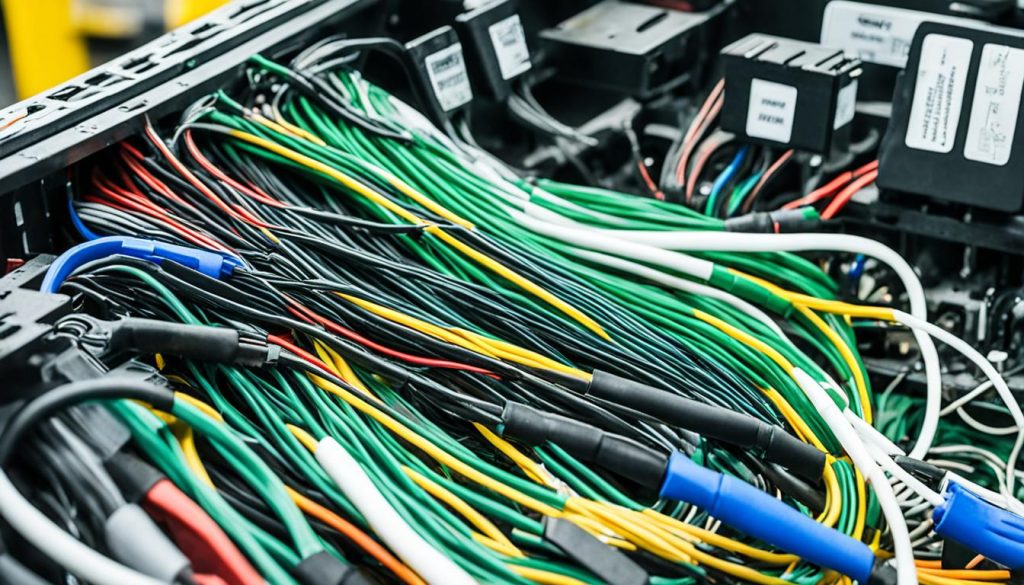
Splice-in Towbar Electrics and Converters
For vehicles that don’t support a direct plug-in wiring harness, splice-in taillight converters become a vital solution. These converters enable older or more complex vehicles to connect with standard trailer electrics by interpreting and converting the vehicle’s wiring signals into a format the trailer can recognize. Splice-in wiring allows for integration with the vehicle’s existing electrical system and ensures that all signals, including brake lights and turn signals, function properly.
Replacement Wiring for Damaged Connectors
Sometimes, the most straightforward solution is to replace damaged connectors with standard trailer wiring connectors. These components are integral to maintaining a strong connection between the vehicle and trailer. Whether you’re dealing with wear and tear or an unexpected malfunction, replacing the connectors can solve electrical issues without the need for an extensive rewiring project.
Each of these towbar wiring solutions comes with its advantages and can be tailored to suit different towing scenarios. It’s important to consult with professionals who can recommend and install the appropriate solution for your towing needs.
Choosing the Right Towbar Wiring Kit
When connecting a vehicle to a trailer for towing, ensuring the towbar wiring is appropriately matched is vital for both functionality and safety. Factors such as the vehicle’s age, electrical system complexity, and towing requirements influence the choice between dedicated towbar wiring kits and universal options, as well as the need for a towbar wiring bypass relay.
Benefits of Vehicle-Specific Towbar Wiring Kits
Vehicle-specific or dedicated towbar wiring kits are designed to interface seamlessly with a vehicle’s electrical system. These kits preserve the integrity of the vehicle’s wiring because they are tailored for the make and model, providing a custom fit that often retains the vehicle’s warranty and supports advanced towing features like trailer stability control. With towbar wiring services offering installation expertise, these kits are an investment in both safety and longevity.
When to Consider a Universal Wiring Kit
For older vehicles or those without complex electrical systems, universal towbar wiring kits present a viable and cost-effective solution. These kits offer flexibility and are generally easier and quicker to install than dedicated kits. While they may not support vehicle-specific features, they are reliable and readily available, ensuring that one can be found to meet almost any basic towing need.
The Role of Towbar Wiring Bypass Relays
Modern vehicles often require a towbar wiring bypass relay to be integrated into the wiring setup. This device protects the vehicle’s electronic systems from being overloaded by the demands of the towed load’s lighting system. By ensuring the vehicle’s circuits are not stressed beyond capacity, it safeguards against potential electrical damage and failure. Utilizing a bypass relay is imperative in newer models with sophisticated circuitry.
| Wiring Kit Type | Best For | Installation Complexity | Cost | Advanced Features |
|---|---|---|---|---|
| Dedicated Wiring Kits | Newer vehicles, specific makes & models | Higher | More expensive | Yes |
| Universal Wiring Kits | Older or less complex vehicles | Lower | Less expensive | Limited |
| Wiring Bypass Relay | Modern vehicles with complex systems | Varies | Moderate | Essential for system protection |
Towbar Wiring Installation Steps
Embarking on a towbar wiring installation requires a set of well-defined steps to ensure a secure towbar electrics hookup. It’s imperative to have a comprehensive understanding and appropriate tools on hand for an efficient towbar wiring setup, following a sequence that safeguards the vehicle’s electrical system and provides for reliable operation.
Planning and Preparing for Installation
Preparation is vital in the process of towbar electrical components installation. This stage includes gathering all necessary wiring diagrams, tools, and accessories. A detailed check of the vehicle’s manual would provide insights on the specific requirements and precautions needed for the installation. It’s also essential to verify local towing regulations to ensure compliance.
Running New Wires and Connecting Components
After appropriate planning, the next step is to run new wires through the vehicle’s chassis, taking care to protect them from potential damage and ensuring they’re routed away from hot or moving parts. Each wire should correspond to specific lights and brake connections, adhering to color coding standards: green for right turn and brakes, yellow for the left turn and brakes, while white is consistently used for the ground connection.
Proper Grounding Techniques for Towbar Wiring
Grounding is a critical aspect of any towbar wiring project. A properly grounded towbar wiring system is fundamental for reliable operation and to avert electrical issues. Secure grounding typically involves attaching the white wire securely to the vehicle’s frame or an existing ground point, ensuring a sound connection to achieve an efficient towbar wiring setup.
After installation, it is crucial to fasten all loose wires with wire loom or zip-ties to preserve the integrity of the wiring and eliminate the risk of snagging or wear over time. Moreover, thoroughly testing the setup ensures all connections are functioning as intended and provides peace of mind prior to hitting the road.
| Wire Color | Function |
|---|---|
| Green | Right Turn and Brakes |
| Yellow | Left Turn and Brakes |
| White | Ground |

Towbar Wiring
Towbar wiring is essential in creating a seamless connection between your vehicle’s electrical system and that of your trailer or caravan. This ensures all your lights and signals are operational while towing. A reliable towbar wiring solution is not just about connecting wires; it’s about integrating towbar electrical components with precision and care. Trust professional towbar wiring services to provide you with the safety and peace of mind you deserve on the road.
There’s an array of connector types out there, each designed to meet the specific needs of various trailers and vehicles. Below, you’ll find a detailed breakdown of the most common towbar electrics connectors, ensuring you make an informed decision for your towing requirements.
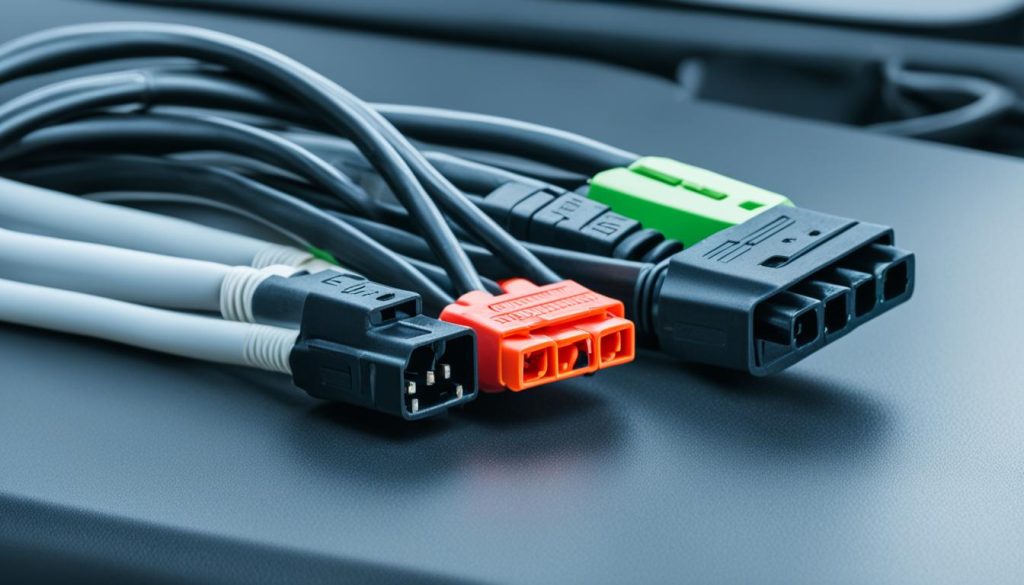
| Connector Type | Configuration | Common Uses |
|---|---|---|
| 4-Way Flat | 4 Pins | Basic lighting for trailers (tail, brake, turn signals) |
| 5-Way Flat | 5 Pins | Additional reverse light function for boats and utility trailers |
| 6-Way Round | 6 Pins | Horse trailers, car haulers, large utility trailers |
| 7-Way | 7 Pins | RVs and larger trailers with additional power supply needs |
Each type of connector plays a pivotal role in different towing setups. Selecting the right connector ensures not only compliance with safety standards but also the reliability of your vehicle’s connection to your trailer. Combining the right towbar electrics with professional towbar wiring services can significantly enhance the ease and safety of your towing experience.
Remember, a reliable towbar wiring solution is more than just about lighting—it’s a commitment to safety. With reliable towbar wiring solutions, you’re equipping your vehicle and trailer with the resilience needed against the complexities of the road. So, when you’re ready to take on the journey, make sure your towbar electrics are professionally installed and ready for any challenge ahead.
Decoding Towbar Wiring Sockets and Plugs
Understanding the essential components that connect our cars to our trailers is critical to safe towing. And it starts with the towbar wiring sockets and plugs. It’s not just about keeping within towing regulations; it’s about road safety and ensuring that every signal we send from our vehicle is communicated to the trailer we’re hauling. Let’s dive into the intricacies of two widely-used connector types: the 7-pin and the 13-pin systems.
Understanding 7-Pin and 13-Pin Socket Types
When selecting a towbar wiring socket, one must consider the functionality required for their towing needs. The 7-pin towbar wiring is most commonly adopted for its capacity to handle the basic lighting functions necessary for most trailers. This includes indicators, brakes, and taillights. However, the 13-pin towing socket offers a more comprehensive solution, catering to additional requirements such as power for internal appliances within caravans or advanced lighting setups.
Both types of towbar wiring sockets have their specific wiring configurations, each pin corresponding to a different function. Their construction adheres to strict towing regulations, which maintain safety protocols and the seamless operation of all towed vehicles on the road. Awareness and understanding of the correct socket to use is paramount in ensuring your vehicle’s roadworthiness while towing.
How to Use Towbar Electrics Adapters
Sometimes, the mismatch between the vehicle’s towbar socket and the trailer’s connector pin can create compatibility issues. This is where towbar electrics adapters come into play. These adapters serve as a bridge between different wiring systems, ensuring that vehicles with a 7-pin socket can connect to trailers with a 13-pin plug and vice versa. By utilizing adapters, you can maintain the legal lighting and signaling requirements necessary for a safe towing experience.
Whether you’re hauling a simple utility trailer or a multi-functional caravan, it is imperative to use the correct towing electrics setup. Adherence to towing regulations not only ensures compliance with the law but also secures the functionality of every trip you make. Always ensure to check the towing capacity of your vehicle and the electrical requirements of your trailer to select the appropriate towbar wiring sockets and towbar electrics adapters.
How to Test Towbar Electrics Effectively
Towbar system checks are an essential step in ensuring tow safety and functionality. Verifying the proper operation of your towbar’s electrical wiring can be achieved efficiently using the correct tools and methods.
Using a Dedicated Socket Tester for Diagnosis
To test towbar electrics thoroughly, a dedicated 13-pin socket tester is a valuable tool. This device is explicitly designed to assess the electrical output from the towing vehicle and ensure that all necessary signals are being transmitted correctly. When plugged into the towbar’s socket, the tester activates light indicators corresponding to various functions such as turn signals, brakes, and the rear lights. This allows for an immediate diagnostic of any problem areas that might compromise safety.
Collaborative Testing with a Partner
If you do not have access to a socket tester, collaborative light function checking can also be an effective approach. Having a partner to observe the functionality of the indicator, brake, and tail lights while you operate the vehicle’s controls can serve as a manual test of your towbar electrics. This method requires communication and coordination, ensuring that each light performs as expected and complies with safety standards.
Whether using a professional tool or enlisting the help of a fellow road-tripper, proper testing of your towbar’s electrics is crucial. Not only does it help in maintaining road safety, but it also ensures peace of mind during your travels with a caravan or trailer in tow.
Ensuring Compliance with Towing Regulations
For drivers who tow trailers or caravans, adhering to towbar wiring regulations is not only a matter of law but also a key component of road safety. Ensuring that your vehicle’s towbar wiring is compliant with legal standards helps mitigate risks and prevents potential roadside complications. With the right towbar wiring compliance, motorists can enjoy peace of mind knowing that their towbar electrics maintain integrity and reliability on every journey.
Legal Requirements for Towbar Wiring
Every vehicle equipped with a towbar needs to be in line with specific legal requirements that govern towbar installations. These regulations are in place to ensure that all towbar electrical components work correctly and in harmony with the vehicle’s standard electrical system. Adhering to these rules is not just a recommendation; it’s a necessity. From the number of pins in the wiring connectors to the color coding of the wires, each detail in a towbar wiring setup can be subject to inspection and must meet predefined standards.
Why Bright and Functional Lighting Matters
Functional towbar lighting is crucial because it signals the driver’s intentions to other road users, thereby increasing safety for everyone involved. Bright and responsive lights on a towed trailer or caravan prevent misunderstandings that could otherwise lead to accidents. As part of safe towing practices, securing bright and functional lighting implies verifying that all components, from the taillights to the brake lights, are in perfect working condition and that they reflect the accurate output of the vehicle’s controls as required by towbar wiring regulations.


